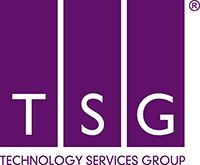It’s time to break up with Windows 7
How to handle the break up
In exactly 350 days, Microsoft will officially end support for Windows 7, meaning those still running the outdated software will be wide-open to serious security threats.
Although the deadline is less than a year away, a recent study by Kollective highlighted a perturbing lack of awareness towards the imminent ‘death’ of Windows 7, with 17% of businesses surveyed completely unaware of the end of support for the OS and 6% who are aware but currently don’t plan to do anything about it.
Let me put it this way, if the integral structure of your house became unstable due to old age, would you leave it to crumble and simply hope it doesn’t fall down? Of course not! You would take the necessary measures, using the latest and strongest materials to fix it, keeping the elements out and a roof above your head for years to come.
So, why is it so hard to think of your business in the same way? Your operating system is at the heart of the functions keeping your company running every day and if someone was able to compromise this vital system, it could metaphorically come crashing down.
If your business is currently running Windows 7, you will need to migrate to Windows 10 before the deadline to ensure you have access to critical updates and patches from Microsoft, as and when they are released.
Windows as a service
The good news is, Microsoft has streamlined its system considerably since the Windows XP end of life in 2014, which saw the transition taking upwards of three years for many businesses, so migration to the new OS should be less daunting. Although, this doesn’t mean it should be pushed under the rug until the last minute, as large enterprises need to consider the challenges of updating thousands of machines, often across multiple sites.
Once you’ve upgraded, you’ll continue to have access to crucial patching updates, but you’ll also have to make sure your business has a plan in place to install these quickly and efficiently across your organisation.
Windows 10 will be the last operating system of its kind from Microsoft, as it moves to the cloud-based ‘Windows as a service’ approach. This means that, rather than organisations migrating to an entirely new OS every few years, the system will be continually refreshed through incremental updates that fall into two categories: feature updates, released twice a year and providing new functionalities, and quality updates, typically released monthly or when a critical issue is detected – these updates are crucial for maintaining security.
Mostly, this is a welcome change in the way we update our technology as it will remove the need for huge system overhauls. But with more frequent OS update releases, organisations will need to ensure they have the resources to roll out new patches, as a backlog of updates presents a major security threat and will leave gaps in your system that could present potential gateways for cyber-attacks.
A very real threat
It’s easy to brush these warnings aside and think “could it really happen to us?”, when in fact the threat is very much real and has played out before on a large scale.
In May 2017, the WannaCry ransomware attack catapulted into the headlines after the NHS became a victim of the outbreak. Although initially it seemed the NHS had been targeted specifically, more victims emerged as time went on, making it clear that the attack was widespread.
As it turned out, this calculated cyber-attack had infected the outdated systems of businesses worldwide, specifically exploiting those that weren’t updated with the pre-emptive security patches from Microsoft.
With the Kollective study revealing that 24% of businesses leave it up to their employees to install major updates, it is clear a shift in mindset towards updating systems is needed as we move forward into this new age of the Windows OS.
An expert IT team
According to our security partner Sophos, the reason businesses such as the NHS fell victim to the WannaCry attack was due to a lack of resources required to patch their systems regularly, consistently and in a verifiable manner.
Understandably, not all businesses have the funds nor the need for an extensive IT department, and that’s OK. Your business of 20 employees doesn’t necessarily need a 5-strong IT team. This is where externally managed IT support is advisable.
At TSG, we offer a complete IT support and security portfolio, so if you’re about to bury your head in the sand at the thought of starting and maintaining your business’ Windows 10 migration, we could be the experts your business needs. Plus, you’ve already made the first step by realising the importance of moving to a fully supported OS.
The power of the cloud
Of course, the positive security implications of migrating to Windows 10 are the main reason you should be taking action now. However, there’s also a rainbow behind the cybercrime cloud filled with an abundance of other benefits that migrating can bring to your business.
Windows 10’s integrated security features, coupled with the high-powered operating system, enables a protected environment for your company’s productivity to thrive. Users are able to collaborate more than ever before, sharing data in the cloud via Windows universal app functionality – allowing a seamless experience across multiple devices and locations.
Ready to move on?
We understand its never easy breaking up and change can be daunting for an organisation of any size, but we’re here to get you through it.
Get in touch with team TSG today to start planning your upgrade.

